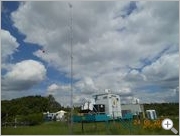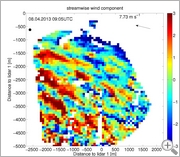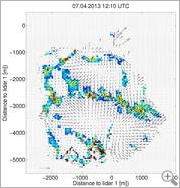Organization Inside of the Chaos
Dr. Katja Träumner and her Young Investigator Group have developed a new measurement approach which helps to a better understanding of turbulence in the atmospheric boundary layer.The Council for Research and Promotion of Young Scientists (CRYS) at KIT has now attested to the YIG very good work.
Twirling leafs or circling gliders are indications of turbulence in the atmospheric boundary layer. Turbulence is classified typically as chaotic and in detail not predictable. “Yet, it is also known that inside this chaotic system kinds organisation can develop”, says Katja Träumnerfrom the Institute of Meteorology and Climate Research, “that under certain circumstances movements organize themselves”. One main task in meteorology is to describe the processes in the atmosphere and togive them parameters so that forecast model are able to reproduce them. The basis for that are observations. To observe self-organization in the turbulent wind field it is necessary to measure with high spatial and temporal resolution. Founded in 2010, the KIT Young Investigator Group “Exploring coherent structures using dual Doppler lidar systems” has developed, in theory and practically, a new measurement approach using laser-based remote sensing techniques. The YIG successfully deployed it during an international field campaign.
The observed wind fields show impressive details of the self-organization of the turbulent wind near the surface: During situations with considerable background wind the movement organises in bands of enhanced and reduced wind speed which a several hundred meters long. During calm situations, narrow zones of convergence develop, which could join to cell-like structures. That means, the linked updrafts can organize themselves in alveolar patterns.
KIT supports the YIG for four years with money from the Exzellence Initiative. Every year, the YIG is provided with approximately 80.000 €.
With money from the Exzellence Initiative, KIT has installed 38 Young Investigator Groups. They are designed to support young scientists, to make them self-reliantin an early stage and to strengthen the research profileof KIT.



